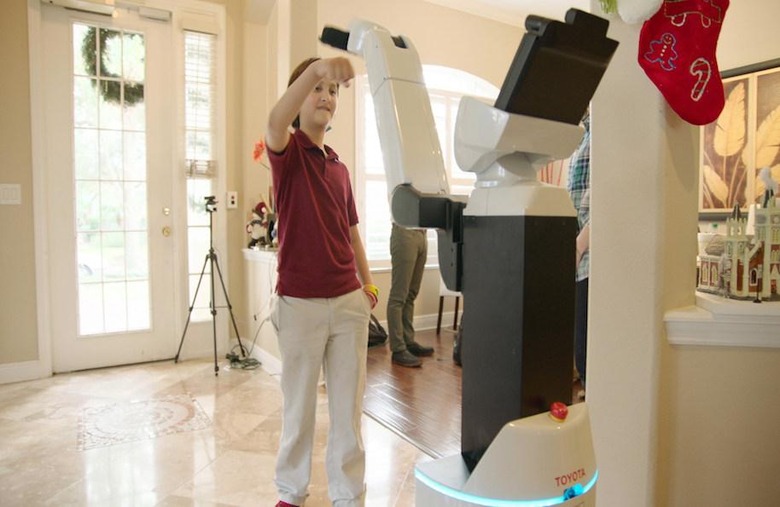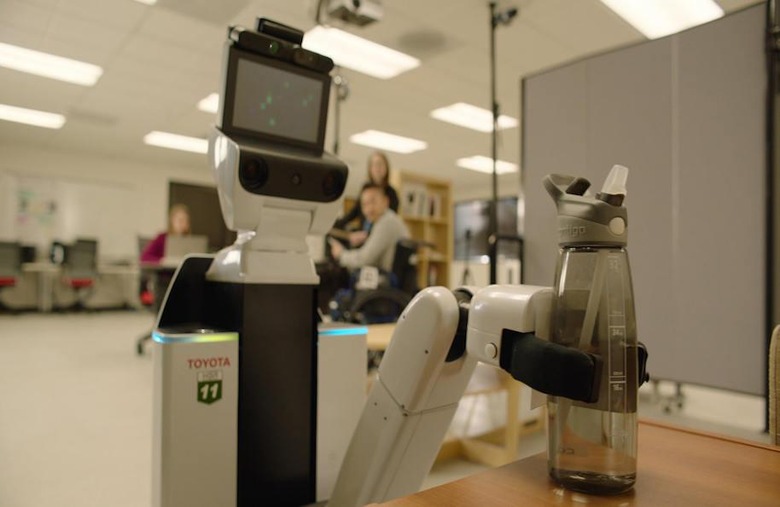Toyota gave a paralyzed US army vet a robot aide: Here's what happened
Toyota has finished its first domestic robot trial in the US, putting a prototype Human Support Robot in the home of a paralyzed US war veteran. The robot, known as the HSR, is part of Toyota's "partner robots" project, exploring how technology can enable those with limited mobility and other restrictions to live more productive and independent lives. For vet Romy Carmago, in Florida, that means a robot nurse-cum-butler to help in ways he's unable to.
Carmago, who Toyota picked for its first North American in-home trial of the HSR, was left paralyzed from the neck down after his time in Afghanistan. The HSR was able to open doors for him, as well as fetch things from the kitchen and more.
Standing around four feet high, the HSR is designed to minimize bulk and thus operate within domestic environments, which are typically more confined than hospitals or other facilities. It's fitted with a robotic arm at the front, while the robot itself can adjust its height to expand its reach. Toyota intentionally kept the power of the arm low, so that even if it collides with a human it minimizes the risk of injury.
Similarly, there are anti-collision sensors and obstacle avoidance algorithms to prevent the HSR from bumping into objects and people. Again, it's purposefully made slow – maximum speed is just 0.5 mph – though it can handle inclines of up to 5-degrees and 5mm steps. As well as remotely controlling it via an app for smartphones and tablets – initially on the same network, though Toyota plans to open that up to remote access – the robot can be instructed verbally, too.

On the end of the arm there's a simple two-finger gripper, flexible and with soft padding, that can conform to unusually-shaped objects. It also integrates a pressurized suction pad, which can be used to grab papers and other light objects. Object-recognition is used to prepare the arm and gripper for the best approach to successfully grab whatever is required.
Users will be able to ask for a specific object to be retrieved, from boxes and shelves, with the HSR automatically figuring out how best to do so. However, a manual control mode can be used for more complex tasks, remotely operating the robot's gripper. A display on the top of the HSR's "head" and a camera allows it to be used for video calls.

It's part of a range of ways Toyota is exploring how technology more commonly associated with automotive uses could be expanded outside of vehicles. The company is also working on exoskeletons that can assist partially-paralyzed people walk, robots that can assist in moving the bed-bound around the home, and Project BLAID, which promises to help the visually-impaired better understand their surroundings.
When, exactly, the Human Support Robot might exit trial stage and make it to production – and, indeed, how much it might cost – is unclear at this point. Still, Toyota isn't alone in looking to broader uses of its research. Hyundai is working on exoskeletons of its own, for instance, prototypes of which we tested out last year.
MORE Toyota





